Heritage in their hallways
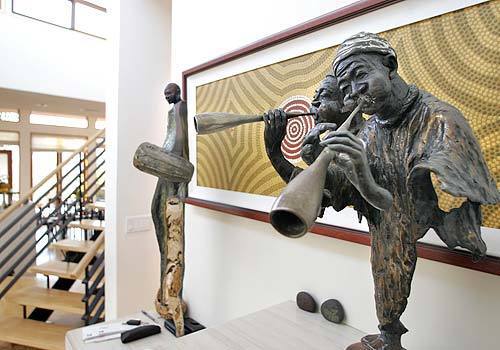
Pipers by Ed Dwight hail in front of a dotted abstract by Aboriginal artist Colin Byrd. (Kirk McKoy / LAT)
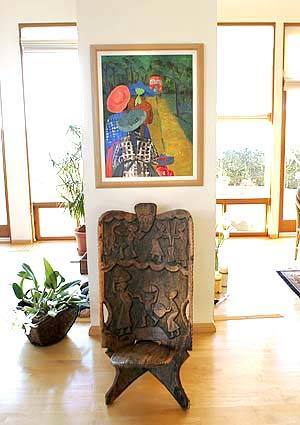
A presentation from BernardÂ’s co-workers, a carved African chieftainÂ’s chair is paired with a Jonathan Green painting that depicts Southern black life. (Kirk McKoy / LAT)
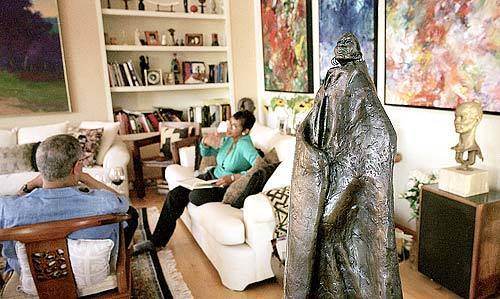
A bronze sculpture of a Masai woman by Ed Dwight is part of the Kinseys’ collection. (Kirk McKoy / LAT)
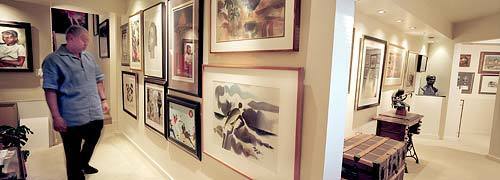
Paintings by Buena Johnson, James Denmark, Elizabeth Catlett, Margaret Burroughs and other artists line the corridor that leads to a humidified showroom. “All of these pieces are part of telling a story of how the African American people became who they are. It is in the two-dimensional art, [and] the sculptures. It’s in the historical documents,” Bernard Kinsey says. (Kirk McKoy / LAT)
Advertisement
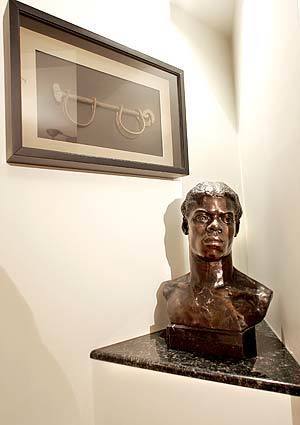
An 1899 sculpture by May Howard Jackson entitled “Slave Boy” sits below framed female slave shackles. (Kirk McKoy / LAT)
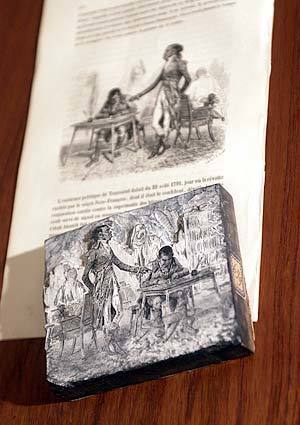
An 1841 hand-carved wood block by Denis Auguste Marie Raffet is part of the Kinseys’ collection. (Kirk McKoy / LAT)
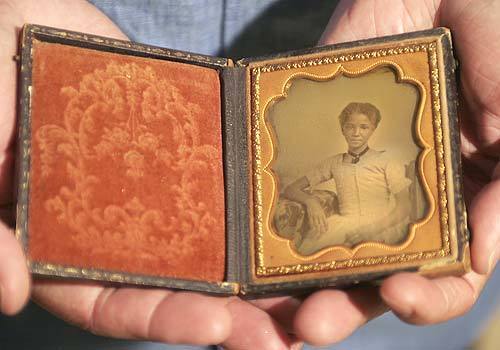
Bernard holds an 1853 daguerreotype of a slave girl. (Kirk McKoy / LAT)
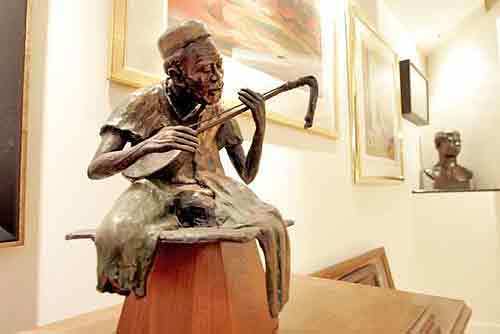
Kinsey’s art collection includes this sculpture by Ed Dwight. (Kirk McKoy / LAT)
Advertisement
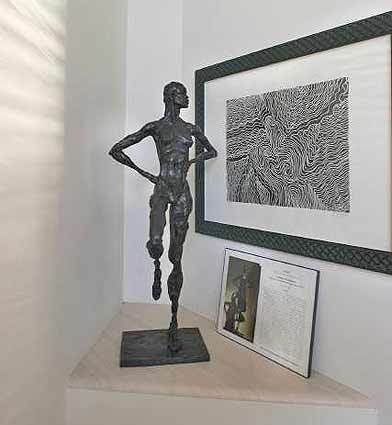
Bernard and Shirley Kinsey’s documents, artifacts, paintings and sculptures trace the introduction of Africans in the Americas through slavery and Reconstruction and on to their evolution as painters, from celebrated 19th century landscapes to contemporary abstracts. (Kirk McKoy / LAT)
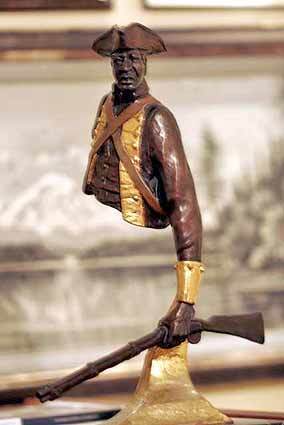
A sculpture by Ed Dwight features a black soldier. (Kirk McKoy / LAT)
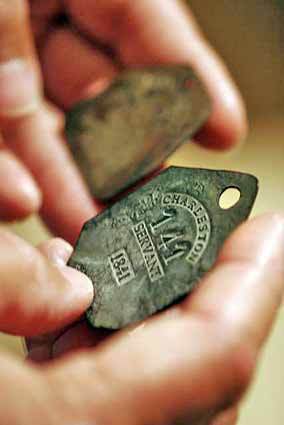
Bernard Kinsey holds a slave tag from Charleston, South Carolina. (Kirk McKoy / LAT)
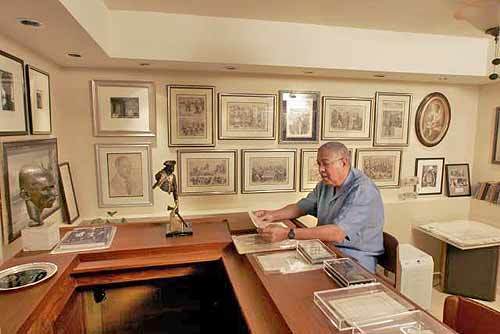
Bernard Kinsey looks over some of the documents in the Kinseys’ gallery. (Kirk McKoy / LAT)
Advertisement
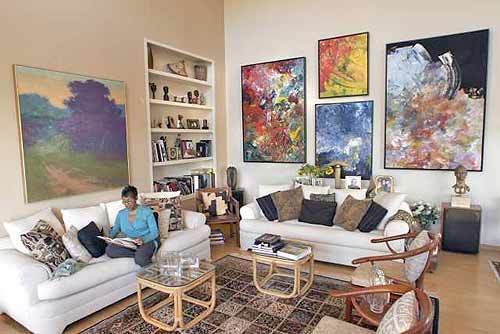
The Kinseys’ living room is dominated by four bold abstracts by Bill Dallas and a large, lush violet landscape by Richard Mayhew. (Kirk McKoy / LAT)
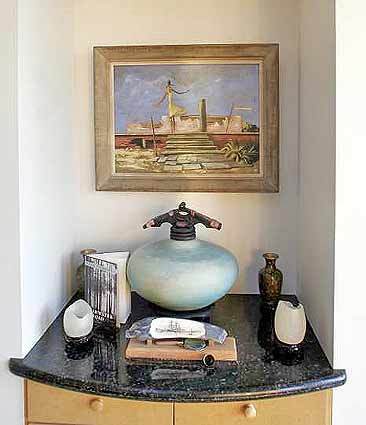
A painting by Huey Lee Smith hangs in an alcove of artistic treasures. (Kirk McKoy / LAT)







